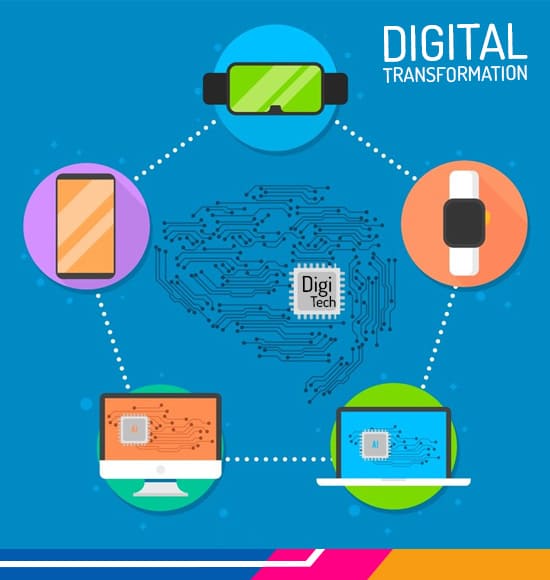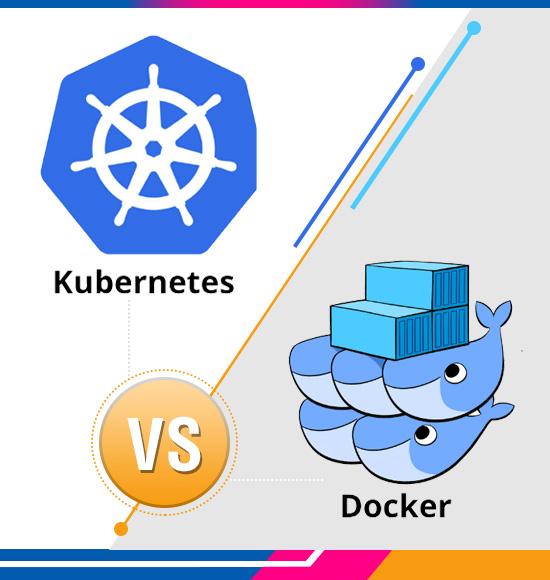Types of Digital Transformation: Tips for Business Digitalization?
A digital transformation initiative comprises a wide range of aspects. On one end of the spectrum, it may involve a complete overhaul of an organization, encompassing areas like supply chains, workflows, employee skill sets, the product itself, customer interactions, and organizational structure. Alternatively, it could involve a more limited program that focuses on adopting digital technology to enhance a specific business process, product, or service, reduce costs, or address a particular business challenge.
Why is Digital Transformation Important?
Digitalization began in the late 20th century and accelerated in the early 21st century, leading to changes in consumer behavior. Businesses must adapt to stay competitive and avoid being taken over by more agile competitors. Digital transformation is an ongoing process requiring a culture of continuous development and adaptation to meet customer expectations.
5 Types of Digital Transformation
Business Process Transformation
Business process transformation is all about changing the way companies operate internally. This can mean giving employees access to new technology and helping them use it daily. It can also mean automating manual processes and making the most of investments in marketing and research to gather new data and make better business decisions.
One of the main goals of business process transformation is to save money. But it can also help companies get their products and services to market faster, improve the quality of what they offer, create a better experience for customers, and improve their overall reputation.
Business Model Transformation
Some businesses have to change their whole model to fit into the digital world. This means they have to think about how their industry works and what they can do to adapt to the new environment. If they change successfully, it can have a big impact on the whole industry – think of how Netflix changed home videos or how Amazon changed retail. To make this kind of change, businesses need to be creative and come up with new ideas beyond what everyone else is doing. It’s all about innovation and finding ways to make your business better.
Domain Transformation
The concept of domain transformation entails surpassing the conventional limits that currently restrict a brand’s markets and opportunities. A prime example of this is Amazon, an online retailer that launched Amazon Web Services, which now stands as the world’s biggest cloud computing provider generating billions of dollars in revenue. Amazon leveraged its existing capabilities, notably its large, highly advanced data centers, to create a new opportunity that gave birth to a whole new market.
The potential for domain transformation exists across various industries and is propelled by cutting-edge technologies such as artificial intelligence, advanced mobile and wearable devices, and the Internet of Things.
Cultural Transformation
Digital transformation initiatives are integral to the success of modern organizations. However, this process can be challenging, especially when it comes to the cultural aspect of digital transformation. It is imperative that every member of an organization understands the potential of new technology to improve business operations, facilitate internal collaboration, and enhance customer engagement.
To leverage technology effectively and create a process of continuous innovation, it is essential to have a workforce that is capable of adapting to change and willing to learn and develop continuously. These skills and capabilities are critical to integrating technology into the fabric of a company and transforming processes, business models, products, and communications for the better.
Cloud Transformation
Cloud transformation is the process of migrating information systems to cloud computing environments. Organizations can choose to migrate specific applications, data, services, or the entire infrastructure to the cloud. Cloud transformation can be done through public cloud, private cloud, or hybrid cloud management. Benefits of cloud innovation include efficient data sharing and storage, faster time-to-market, and greater scalability and flexibility. However, it also poses challenges in governance, security, and cost control.
What Are Digital Transformation Drivers and Technologies?
The following are some of the key technologies that have enabled digital transformation in recent times:
Cloud Computing
It has emerged as a critical enabler for organizations seeking to access computing resources, advanced software, new updates, and functionalities in a quick and affordable manner. This technology offers an alternative to on-premises resources and enables businesses to access resources over the Internet from any part of the world, without having to wait for weeks or months.
Commoditized IT
Commoditized IT has allowed organizations to shift their focus from infrastructure to innovation that provides value to their customers and sets them apart in the marketplace. As a consequence, businesses can optimize their investments and human resources in a more strategic manner.
Mobile Platforms
Mobile platforms have emerged as a powerful tool for enabling employees to work from anywhere, at any time, while also providing quick access to corporate resources, regardless of location.
Machine learning and Artificial Intelligence
ML and AI have become increasingly essential in providing organizations with intelligent insights that empower more accurate and faster decision-making. These technologies are being leveraged to inform various strategic areas like marketing, sales, and product development.
Automation
Automation has allowed businesses to delegate repetitive tasks to machines, freeing up time for human resources to focus on productivity and efficiency improvements.
Augmented reality (AR) and virtual reality (VR)
AR/VR has provided users with remote access to services in a gamified way, which encourages engagement and can lead to more meaningful interactions.
Internet of Things (IoT) devices
IoT devices have emerged as a rich source of data that can be leveraged to inform AI services, which can then be used for automation and personalization.
Edge Computing
Edge computing has become an essential component of digital transformation strategies, as it enables organizations to process data at the device level, ensuring privacy and accessibility, while also enabling low-latency data processing.
Blockchain
Blockchain technology has revolutionized the entire technology landscape, enabling decentralization across numerous industries. Payment processing through ledgers that anonymize transactions is a basic use case, but this technology has immense potential to transform industries and create new business models.
Businesses worldwide are leveraging these technologies to deliver unique services and experiences to their customers. Digital transformation strategies help organizations keep pace with the ever-changing technology landscape, identify relevant technologies, and implement them at scale and on budget.
Use Cases and Industry Examples of Digital Transformation
There are many objectives of digital transformation, but a few common ones are:
Improving Customer Experience
This means using technology to create better experiences for customers. For example, businesses can use data to understand their customers better and provide more personalized content and services.
Rethinking Computing Infrastructure
This means moving from old-fashioned physical data centers to more modern cloud platforms. Cloud platforms can help businesses develop and launch new products faster, and they’re often more reliable than traditional data centers.
Improving Internal Collaboration
This means using tools like video conferencing, online task management, and messaging platforms to help teams work together more efficiently. This can increase productivity and make it easier for employees to work from anywhere.
Improving Content Accessibility
Most organizations use content in some way, either as part of their internal activities or to communicate with customers. Digital transformation can make it easier to find and access content, which can help businesses work more efficiently and serve their customers better.
Digital transformation has become a critical aspect of organizational growth in various industry sectors. Some examples are listed below:
Manufacturing Sector
The Internet of Things (IoT) is being used to enhance efficiency and profitability by reducing machine downtime and scrap. Predictive maintenance and process improvement are being enabled through IoT technologies.
Retail Sector
Digital technology is being used to improve customer experiences by extending the shopping experience from brick-and-mortar stores to websites and web applications. Retailers are using chatbots, artificial intelligence, and advanced data analytics to deliver personalized recommendations. In-store experiences are also being enhanced through digital technology.
Healthcare Industry
Digital capabilities are being introduced to adapt medical services towards a more patient-centric and value-based approach. Virtual medical appointments and networked electronic health records (EHR) are being offered by many healthcare providers. Digital capabilities not only benefit patients but also providers and payers while reducing service provisioning costs.
Smart Cities
Smart cities are using a combination of physical infrastructure and digital technologies to become more efficient and provide citizens with a higher quality of life. Sensors, artificial intelligence, and video analytics are being leveraged to monitor and solve environmental issues, optimize public transport, and promote citizen participation and collaboration through digital means.
Banking Sector
Financial institutions are transitioning from traditional branch offices to digital models. Banks are using web applications and mobile applications to provide access to bank services and working with FinTech startups to provide new mobile payment solutions.
Tips to Create Strategy for Digital Transformation
The following points outline some ways that a company can create a successful digital transformation strategy.
Identify and Measure Business Goals
It is vital to start by clearly identifying the business drivers of the digital transformation initiative. Consulting with stakeholders can help determine where technology can have the most significant impact, and it is crucial that the relevant teams understand the motivation and buy into the project even before it starts.
Practical digital transformation goals should include key performance indicators (KPIs) that can track progress and justify the effort and investment to all parties involved.
Consider Hiring Experts
In many cases, organizations lack the internal expertise to lead a digital transformation, so hiring full-time employees with digital transformation experience may be necessary, or bringing in a consulting firm may be necessary. As the digital transformation project evolves, hiring specific roles in IT, marketing, analytics, and other areas may also be essential.
Build on your Strength
When considering a digital transformation project, it is crucial to consider the company’s strengths today, such as the existing customer base, successful products, and the values the brand has become known for. It is essential to ensure that existing value is not erased, and digital transformation should be a natural extension of previous efforts, preserving the company’s strengths while taking them to new heights.
Implement new Operational Policies
Before deploying new tools or technologies, thinking carefully about how employees will use them is essential. It is crucial to define operational policies that leverage new technologies, provide value to employees, and make them more productive. This often requires a cultural transformation and an ongoing educational process across the company.
Create a Process for Iterative Transformation
Digital transformation is not an overnight process. It is essential to make small changes, evaluate their value, and continue from there. It is not uncommon to revert changes or change strategy according to results and feedback from the field. A digital transformation project that evolves through a series of stages is more likely to succeed than a “big bang” change. Keeping the strategy agile will help us learn what works and adapt rapidly to changing circumstances.
Consider Opting for a Digital Transformation Framework
A digital transformation framework developed by analysts and consulting firms may be worth considering. Starting from a recognized framework ensures that essential steps are not missed and other organizations’ mistakes are avoided. Adapting frameworks to specific goals and requirements is essential and can be especially beneficial if the management team has no experience in digital transformation.
In today’s digital world, businesses face numerous challenges, from enhancing efficiency to streamlining operations and driving innovation. But don’t worry, at Copperchips, we understand your unique needs and goals, and we’re here to help you overcome these challenges with our comprehensive digital transformation services.
So why wait? Get in touch with us today and take the first step towards a stronger, more efficient, and more innovative organization.




